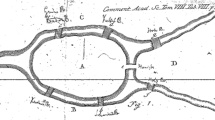Abstract
This article addresses the issue of “objectivism vs constructivism” in two areas,biology and cognitive science, which areintermediate between the natural sciences suchas physics (where objectivism is dominant) andthe human and social sciences (whereconstructivism is widespread). The issues inbiology and in cognitive science are intimatelyrelated; in each of these twin areas, the “objectivism vs constructivism” issue isinterestingly and rather evenly balanced; as aresult, this issue engenders two contrastingparadigms, each of which has substantialspecific scientific content. The neo-Darwinianparadigm in biology is closely resonant withthe classical cognitivist paradigm in cognitivescience, and both of them are intrinsicallyobjectivist. The organismic paradigm inbiology, based on the concept of autopoiesis,is consonant with the paradigm of “enaction” incognitive science; the latter paradigms are bothprofoundly constructivist.In cognitive science, the objectivism vsconstructivism issue is internal to thescientific field itself and reflexivity isinescapable. At this level, strong ontologicalobjectivism is self-contradictory and thereforeuntenable. Radical constructivism isself-coherent; but it also rehabilitatesa weak form of objectivism as a pragmaticallyviable alternative. In conclusion, there is aneven-handed reciprocity between “objectivist”and “constructivist” perspectives. Finally, thearticle examines the consequences of thisconclusion for fields other than cognitivescience: biology; physics and the naturalsciences; and the human and social sciences.
Similar content being viewed by others
REFERENCES
Bloor D. (1976). Knowledge and Social Imagery. London: Routledge and Kegan Paul.
Dawkins R. (1976). The Selfish Gene. Oxford: Oxford University Press.
Dretske F. (1988). Explaining behaviour. Cambridge: MIT Press.
Fodor J. (1975). The Language of Thought. New York: Thomas Crowell.
Gardner H. (1985). The Mind's New Science: A History of the Cognitive Revolution. New York: Basic Books.
Ho M.W. (1997). The Rainbow and the Worm.
Kuhn T.S. (1962). The Structure of Scientific Revolutions. Chicago: Chicago University Press.
Lakoff G. (1987). Women, Fire and Dangerous Things: What Categories Reveal About the Mind. Chicago: University of Chicago Press.
Latour B. & Woolgar S. (1979). Laboratory Life: The Social Construction of Scientific Facts. Sage: Beverly Hills.
Lenay C. (1999). Darwin. Paris: Les Belles Lettres.
Lenay C. (1993). Caractères adaptatifs et représentations symboliques. Intellectica 16: 209–257.
Lewontin R.C. (1992). The Dream of the Human Genome. New York Review of Books.
Lovelock J. (1988). The Ages of Gaia. New York: Norton.
Maturana H. & Varela F.J. (1980). Autopoiesis and Cognition: The Realization of the Living. Boston: Reidel.
Medawar P. (1956). The Uniqueness of the Individual. London: Methuen.
Millikan R.G. (1984). Language, Thought and Other Biological Categories: New Foundations for Realism. Cambridge: MIT Press.
Oyama S. (1985). The Ontogeny of Information: Developmental Systems and Evolution. Cambridge: Cambridge University Press.
Pacherie E. (1993). Naturaliser l'intentionnalité. Paris: PUF.
Prigogine I. & Stenghers I. (1979). La nouvelle alliance. Métamorphose de la science. Paris: Gallimard.
Putnam H. (1981). Reason, Truth and History. Cambridge University Press.
Rosen R. (1991). Life Itself: A Comprehensive Enquiry into the Nature, Origin and Fabrication of Life. New York: Columbia University Press.
Saunders P.T. (1989). The Evolution of Biological Forms. Leonardo 22: 33–38.
Simondon G. (1964). L'individu et sa genèse physico-biologique. Paris: PUF.
Stewart J. (1996). Cognition = Life: Implications for Higher-Level Cognition. Behavioural Processes 35: 311–326.
Varela F., Thompson E. and Rosch E. (1993). The Embodied Mind. Cambridge: MIT Press.
von Glaserfeld E. (1988). Introduction à un constructivisme radical. In P. Watzlawick (ed.), L'invention de la réalité. Paris: Ed du Seuil.
Waddington C. (1956). Principles of Embryology. London: Allen and Unwin.
Whitehead A.N. (1926). Science and the Modern World. Cambridge: Cambridge University Press.
Author information
Authors and Affiliations
Rights and permissions
About this article
Cite this article
Stewart, J. Radical Constructivism in Biology and Cognitive Science. Foundations of Science 6, 99–124 (2001). https://doi.org/10.1023/A:1011313532109
Issue Date:
DOI: https://doi.org/10.1023/A:1011313532109




